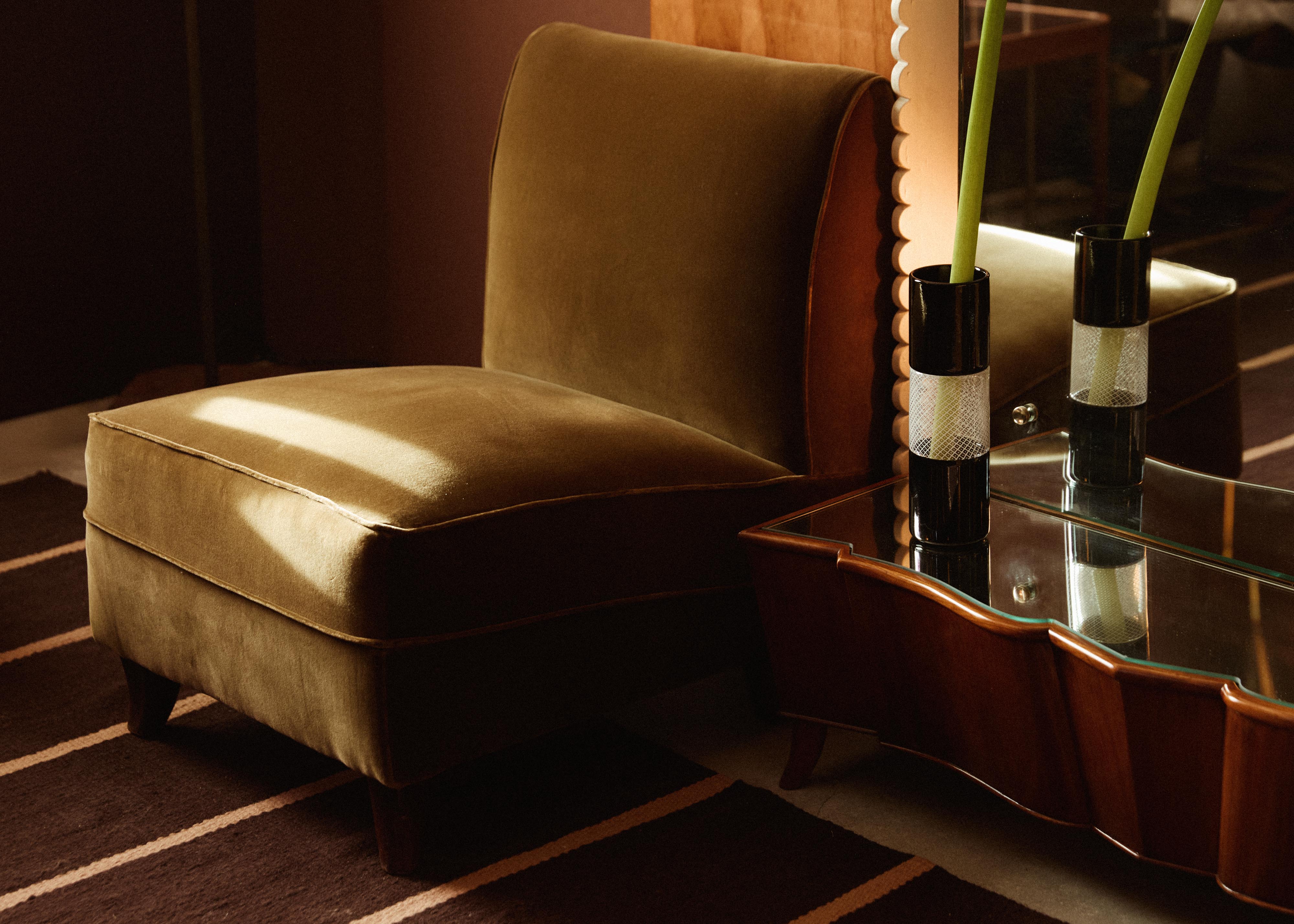Nomad St Moritz: art and design in the Alps
Nomad, the travelling art and design showcase, took its 13 edition to the snowy St Moritz slopes in February 2024

The snowy slopes of St Moritz drew more than just sport enthusiasts to the remote Swiss Alpine town last month. Nomad, the travelling art and design showcase, staged its 13th edition (23 – 25 February 2024) at the former Hotel Eden, a stunning 19th-century landmark currently under renovation, overlooking the frozen lake and mountains
The fair – known for choosing unexpected locations in less-travelled cities – gathered 35 established and emerging galleries and special projects under one roof, contrasting modern aesthetics against the backdrop of the hotel: part grandiose historical relic, part construction site in suspended motion and a curious alternative to the traditional white cube format.
Discover Nomad St Moritz

Rossana Orlandi
Founded by Giorgio Pace and Nicolas Bellavance-Lecompte in 2017, Nomad has since been staged at extraordinary locations such as Monaco’s Villa La Vigie, Venice’s Palazzo Soranzo Van Axel and Certosa Di San Giacomo monastery in Capri. While the duo intend to expand further, possibly even outside Europe to the Middle East, the St Moritz edition (one of their earliest locations) will always return.
'When we created Nomad, we had a clear vision of what we wanted to do, and where we want to go. We wanted to create this special format, which is not a typical fair, it's more of a showcase and experience,' Bellavance-Lecompte tells Wallpaper*. 'Over the last 13 editions we worked on perfecting this model, looking for ways to make it more interesting and looking at new locations, but always trying to find the right balance.

The former Hotel Eden in St Moritz
'It's about looking at the whole ecosystem. Our locations have realised the potential that Nomad has to act as a cultural activator. We bring a completely different sort of tourism for them and they love it,' he adds. 'Being back in St Moritz, we always feel the challenge to bring the most exciting programme with our returning or established galleries, but also to discover new galleries, new talents, and to create a sense of discovery that it's not the usual suspects you find at major fairs.'
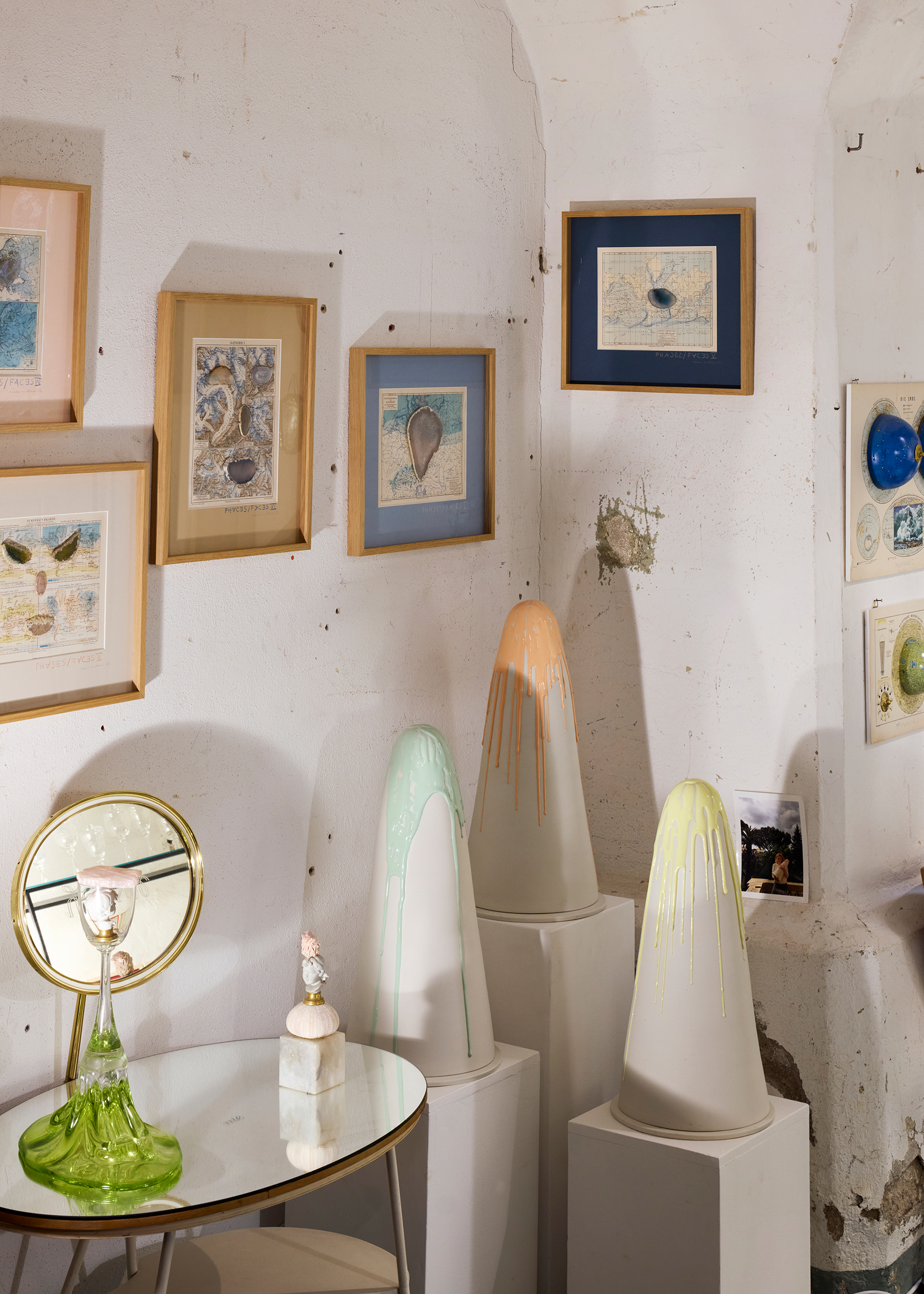
Nives Widauer 2002
Each edition of Nomad has its own ambiance, influenced by local architecture, the kind of design found around the setting and even the time of year. At St Moritz, a contemporary take on cosy alpine chic dominated, with more surprising showcases to discover around the hotel.
Paris-based ceramics expert Florian Daguet-Bresson presented a range of colourful and quirky collections, ranging from Patricia Camet’s pastel ceramic décor pieces modelled after kitchen utensils and items such as cupcake or ice moulds, to Timothée Humbert’s carnivalesque creatures.
Receive our daily digest of inspiration, escapism and design stories from around the world direct to your inbox.
Burkina Faso’s Hamed Ouattara, represented by Swiss art gallery Foreign Agent, displayed midcentury-style cabinets crafted from recycled oil drums, giving a grungy pop of cherry red, yellow or dark green.

Chandigarh Series by Rajan Bijlani
A standout project was the Chandigarh Series by London-based British Indian collector Rajan Bijlani, spotlighting never seen before furniture pieces designed by Le Corbusier and Pierre Jeanneret in India for the World Heritage Site in Chandigarh between 1954 and 1966.
Showing 41 tables, seats and desks from his extensive 500-piece collection, gathered over 20 years, Bijlani has collaborated with Loro Piana Interiors to reupholster the sofas and armchairs.
'The idea was to present the collection in the birthplace of Jeanneret and Le Corbusier, in Switzerland, by an Indian. Normally they’ve been shown with cowhide, which I've never really understood, because cows in India are holy,' says Bijlani. 'My thought was that in Chandigarh you can see the Himalayas, and what's synonymous with the Himalayas is cashmere and pashmina wool.
'For example, I’m showing a high court chair covered in a ginger cashmere from Loro Piana from the Capitol Complex and a pair of rattan chairs from the house next door to Jeanneret’s house in Chandigarh.'
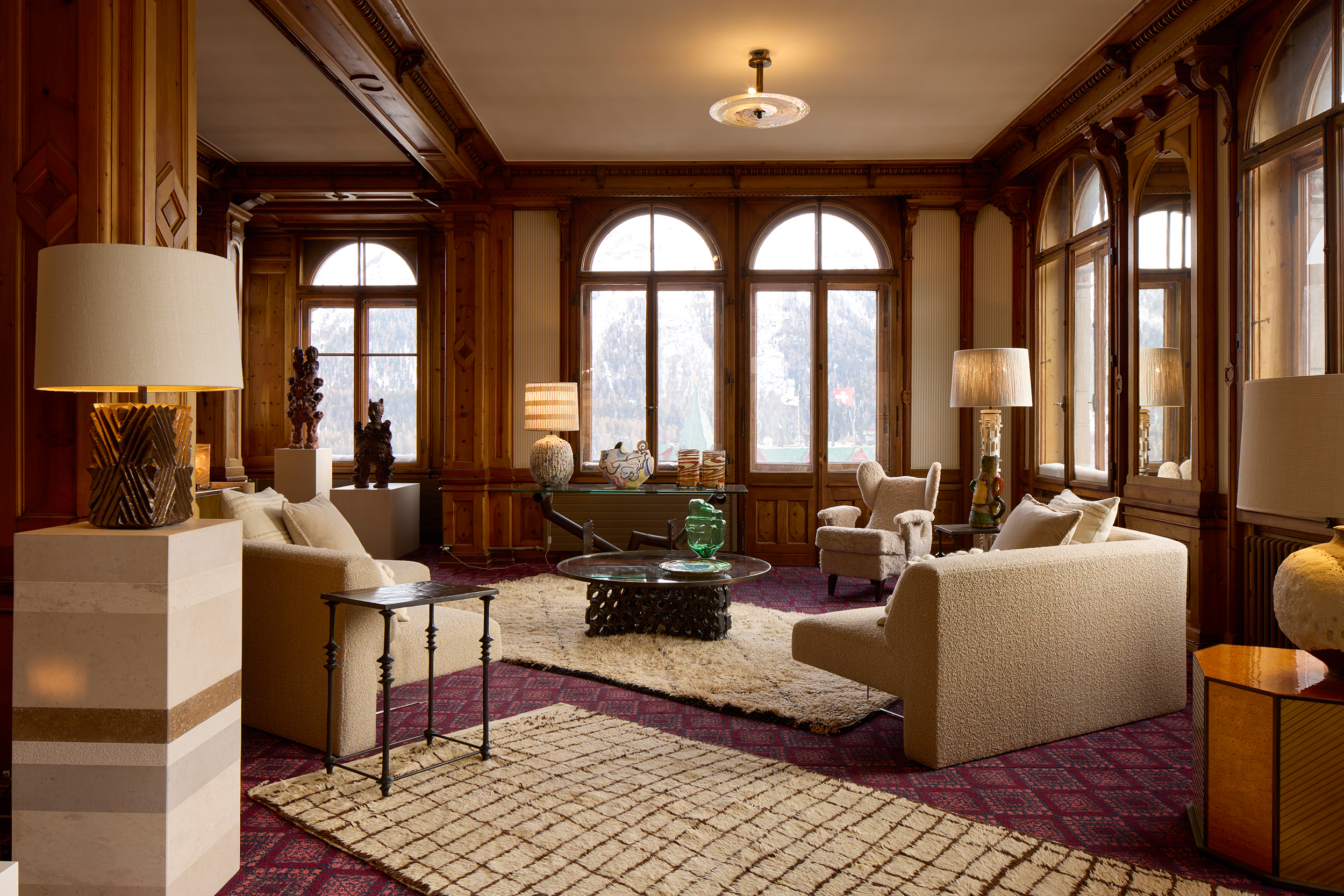
Chahan Sorry
Spatial installation La stanza di Nives by Swiss-Austrian artist Nives Widauer showcased her works using upcycled or found objects, resembling a room-sized cabinet of curiosities with something to look at on every surface.
Alongside her Seven Goblets of Humanity – ornate glasses etched stylised body parts, which she created for the Lobmeyr 200th anniversary in 2023 – she presented antique mirrors etched with her own designs, old maps embellished with geodes and a series of abstract glass sculptures representing the nine saints that protect glaciers. The collection is part of Nomad’s aim to include sustainable design.

Cabana
Meanwhile, the display Bread and Diamonds – a venture by St Moritz-based jeweller Super Mountain in collaboration with local Michelin-starred baker Paolo Casanova – combined glittering jewels inspired by the mountainous landscape with humble artisanal bread and Murano glass pieces by Yali Glass from Venice.
Co-founders Mario Weichselmann and Angelo De Luca presented the pieces side by side because of their shared beginnings in an oven, finding a common ground between the wildly different crafts that all take heat and time to become something new out of the fire.
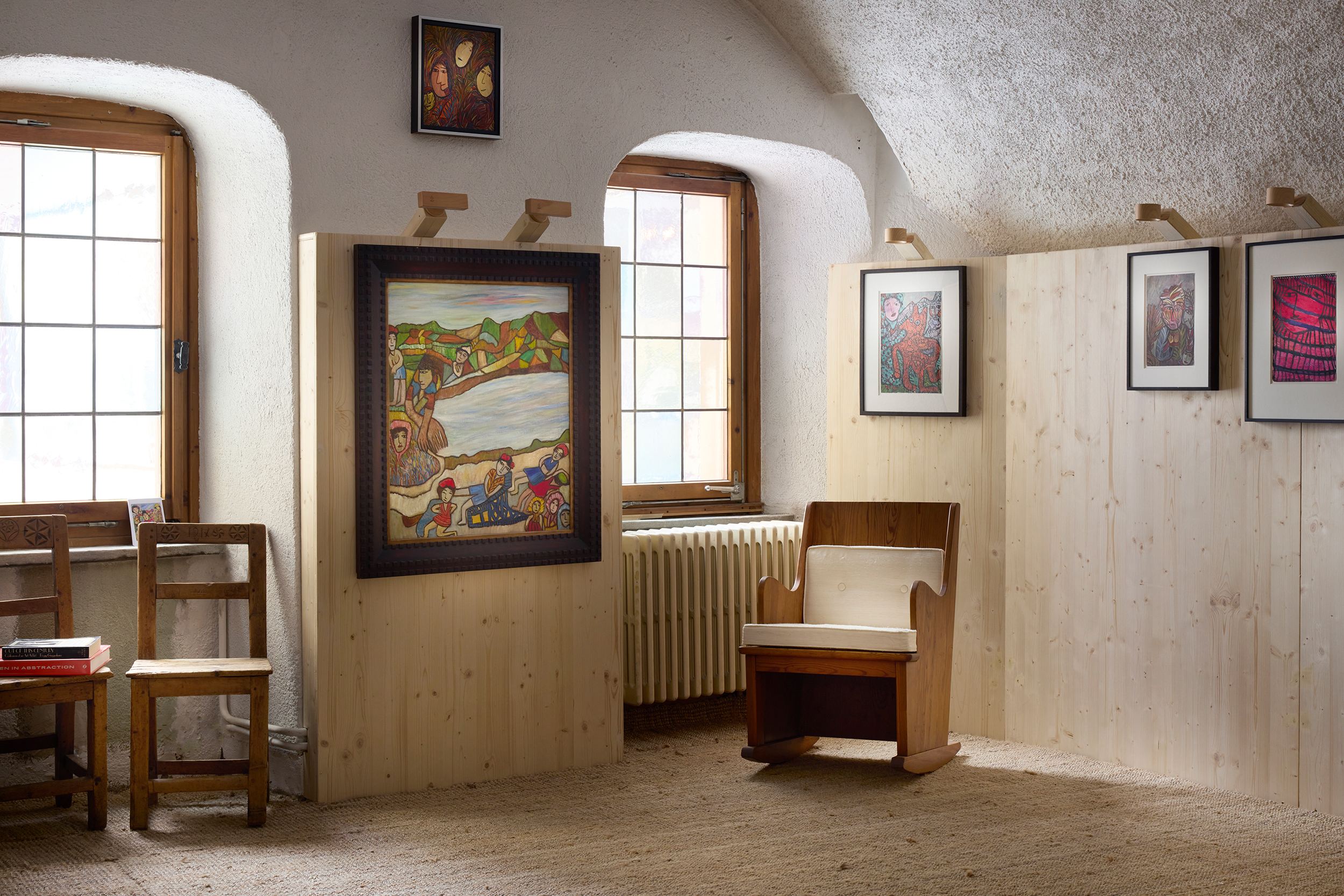
The Gallery of Everything
'One of our rings is inspired by the shape of the St Moritz mountain, encrusted with diamonds and other gemstones. Every year I do a new version, with different seasons, so for Nomad I’m showing the autumn season and on the back [the band] you have the lake of St Moritz in the blue stones,' De Luca says. 'Each craft we’re showing takes a lot of time to be created – the sparkling of the gemstone is reflected in the light of the glass and they both share the same passion needed to make bread.'
Despite the variety on show, Nomad still managed to deliver a cohesive exhibition by mixing together examples of exemplary craftsmanship, a patchwork of aesthetics and a sense of discovery.
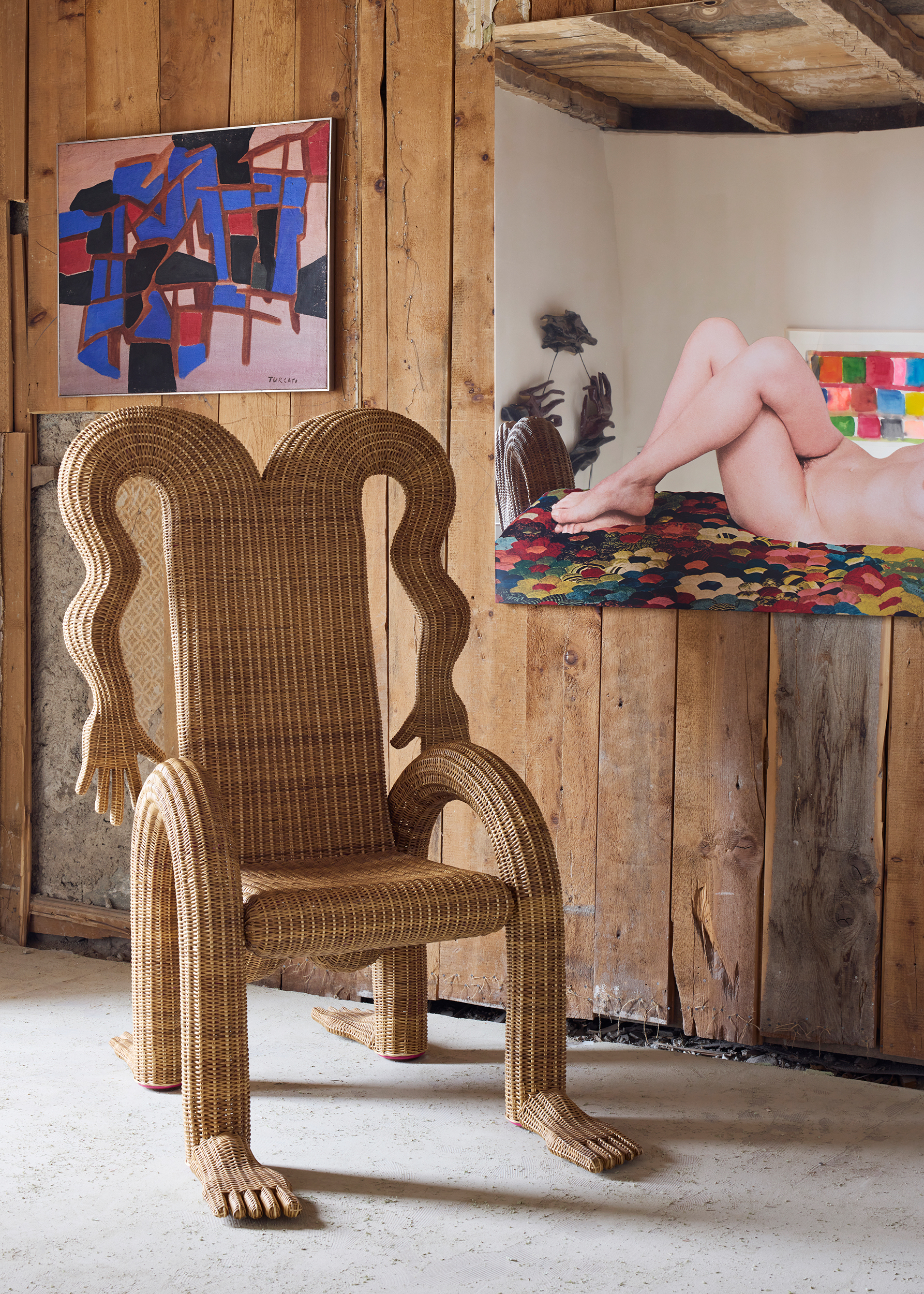
Secci Gallery
'What's special at Nomad is you feel like it’s a community that we create, and that we have managed to foster a relationship between the exhibitors, the location and the visitors as a whole, which for us is definitely the most important factor,' Bellavance-Lecompte says. Nomad is one of the few European formats that merges art and design together inside such an architectural context.
‘I think this multidisciplinary approach really creates a unique atmosphere and is what makes Nomad unique,' he adds. 'But also really allows us to push boundaries and always explore new ideas and collaborations.'
Maghie Ghali is a British-Lebanese journalist based in Beirut. She reports on arts, culture, travel, design, food, the environment and humanitarian issues, both regionally and internationally. As a freelance journalist, she has covered stories around the world for outlets such as Architectural Digest, Al Jazeera, The National, Frieze, Wallpaper* and others.
-
 Dublin-based designer Cara Campos turns abandoned bicycles into sleekly minimal furniture pieces
Dublin-based designer Cara Campos turns abandoned bicycles into sleekly minimal furniture piecesWallpaper* Future Icons: Saudi-raised Irish/French designer Cara Campos' creative approach is rooted in reuse, construction and the lives of objects
-
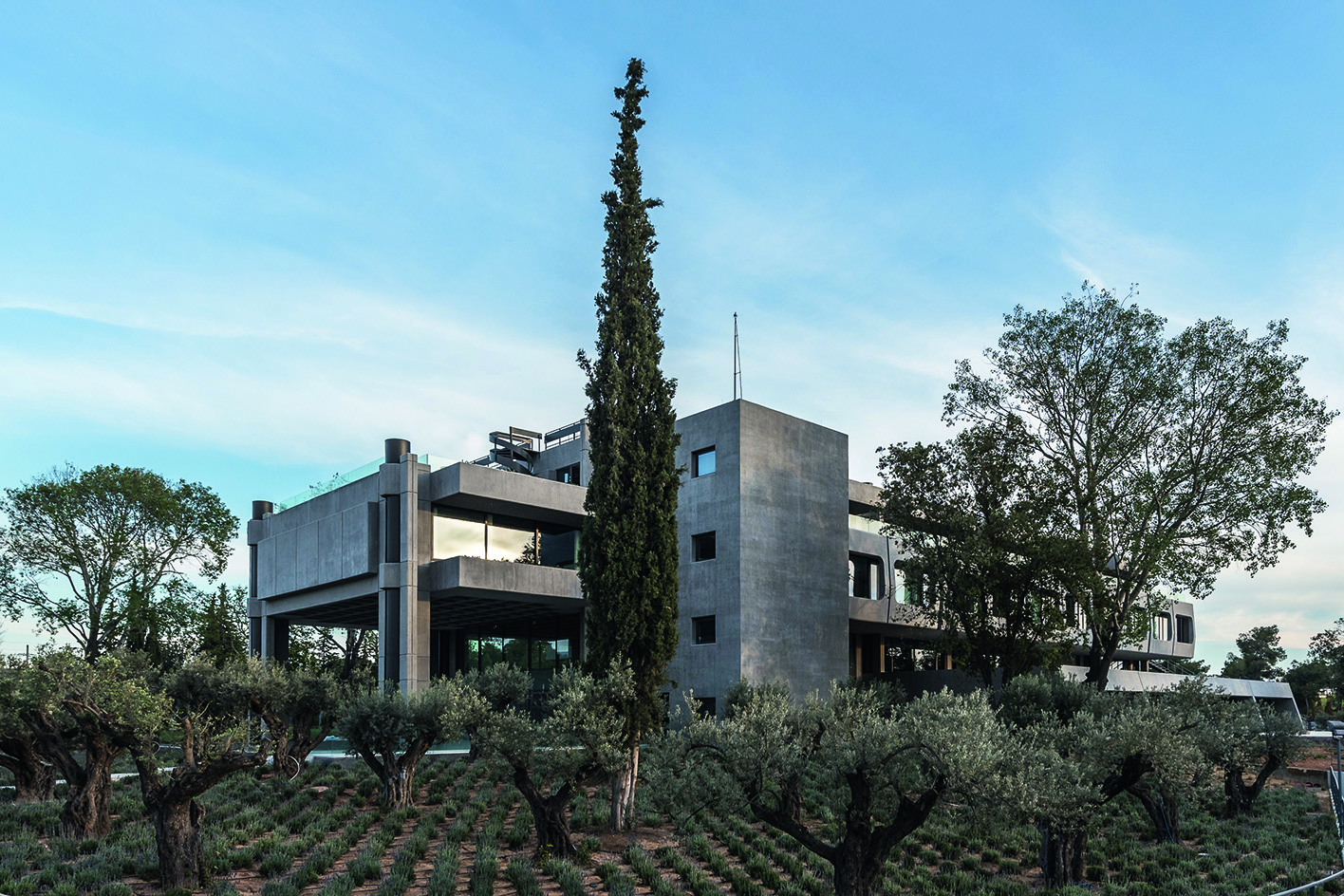 A Greek brutalist gem wows with its reimagining in Athens
A Greek brutalist gem wows with its reimagining in AthensAthens architect Georges Batzios squares up to the renovation of a landmark Greek brutalist office block in the capital's suburbs; we revisit a story from the Wallpaper* archive
-
 Modernism for sale: a Norman Jaffe-designed icon on Shelter Island hits the market
Modernism for sale: a Norman Jaffe-designed icon on Shelter Island hits the marketThe Osofsky House epitomised the glamour of high-end 70s modernism on Long Island. Now updated and refurbished, it’s back on the market for the first time in over two decades
